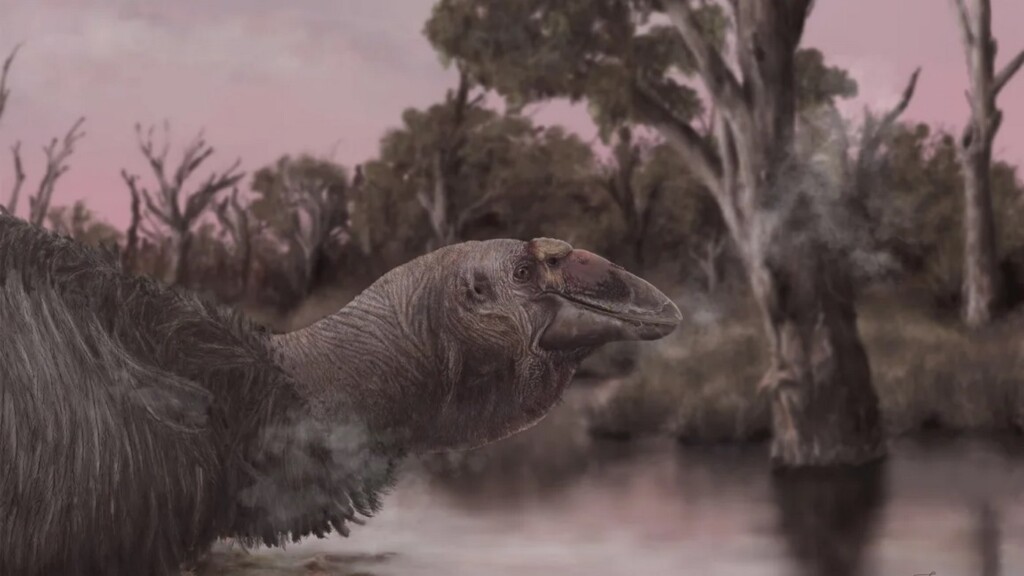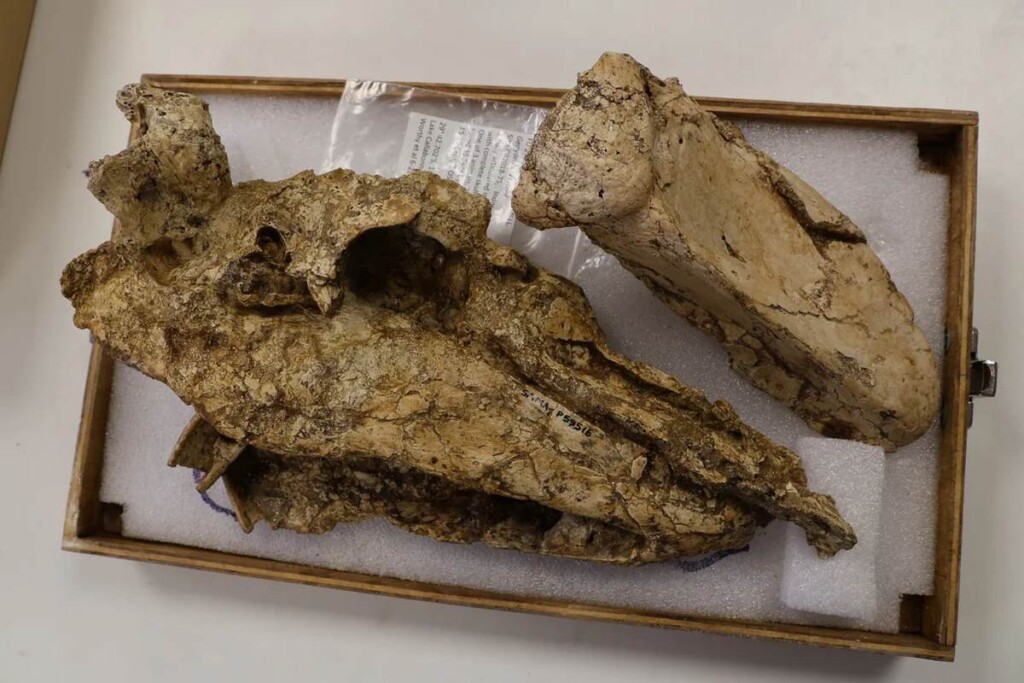 An artistic rendering of Genyornis newtoni – credit Jacob C. Blokland
An artistic rendering of Genyornis newtoni – credit Jacob C. BloklandThe first complete skull ever found of a gargantuan flightless bird that lived 100,000 years ago in Australia is helping paleontologists understand more about the last of the continent's 'Thunderbirds.'
Fossilized skull fragments of the beastly bird, which stood 7 feet tall and weighed 500 pounds, were found in 1913, but they provided very little context or evidence about the animal's life and lineage.
Also known as a mihirung, the Aboriginal name meaning 'giant bird,' Genyornis newtoni is a member of the family of flightless birds from Australia called Dromornithidae. A complete skull was recently uncovered in a site near Australia’s Lake Callabonna filled with Dromornithidae fossils, and for the first time, G. newtoni can be properly identified.
A skull contains the brain cavity, the sense organs, the feeding apparatus, and as often happens in birds, ornamentation as well. When looked at together with existing skeletons, these traits give the impression of a gargantuan goose.
“It is only now, 128 years after its discovery, that we can say what it actually looked like,” Larry Witmer, a professor of anatomy and paleontology at Ohio University, who wasn't involved in the research, told CNN in an email. “Genyornis has a very unusual beak which is very goose-like in shape.”
 Skull of G. newtoni – courtesy Flinders University
Skull of G. newtoni – courtesy Flinders UniversityThe bill of this mihirung was adapted to gripping and ripping young shoots out of the ground, while a soft, grated palate would have allowed it to easily squash fruit into a pulp. Other characteristics suggest it may have even fed underwater as modern waterfowl do.
This surprised Witmer, who said that while being related to the ducks and geese of today, there are no waders or divers anywhere near its size today that feed on subsurface aquatic plants.
MORE PREHISTORIC BIRDS: Prehistoric Bird Once Thought to Be Extinct Returns to New Zealand Wild
The closest living relative it has on Earth today is a 'screamer.' These wading birds from South America are part of an order called Ansiformes, one of only two types of modern birds to be confirmed present during the Mesozoic alongside the other dinosaurs.
Study coauthor and avian paleontologist Jacob Blokland, at Flinders University where the skull was examined, told CNN's Mindy Weisberger that when attempting to make an illustration of this giant flightless bird, he ran into several surprises.
“It surprised me how superficially goosey it looked, with its large spatulate bill, but definitely unlike any goose we have today,” Blokland said in an email.
MORE AUSTRALIAN ORIGINS: Exquisite New Fossil Shows Scientists How Much More Ferocious Australia’s Crocs Once Were
“It has some aspects reminiscent of parrots, which it is not closely related to, but also landfowl, which are much closer relatives. In some ways it appears like a strange amalgamation of very different-looking birds.”
Australia is famous for large flightless birds, including the cassowary and emu, the former being an omnivore, and the latter having a part herbivorous, part insectivorous diet. It's fascinating to think that the landscape sported other giant birds of other lineages with totally different feeding patterns.
SHARE This Bizarre Bird With Your Friends Who Love Prehistoric Beasts…
Source link

